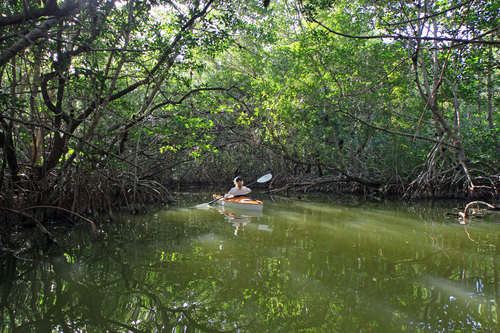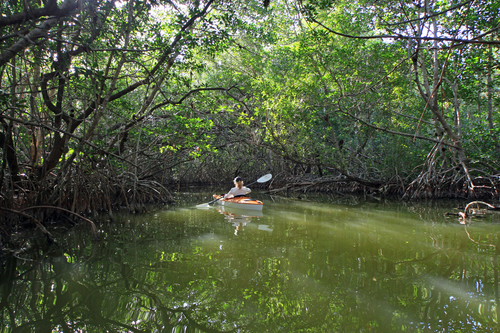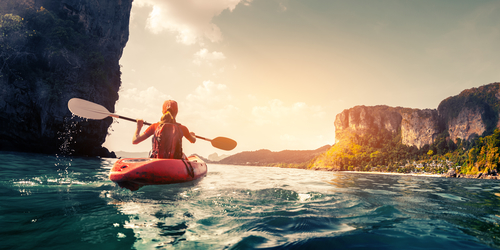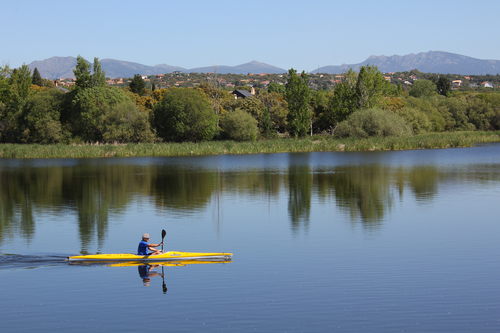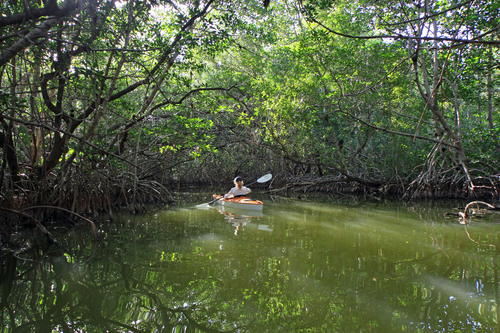The North Johnstone River is a spectacular haven of moving waters that offer a wide range of aquatic activities and water sports such as kayaking and white water rafting.
Raging its way through the dense and ancient Rainforest of Palmerston National Park, this river is home to an array of wildlife. A trip down the river along the 80 km course takes from 4 to 6 days and sightings of salt-water crocodiles, water dragons, eagles, pythons and bird spiders are among those often made.
Before emptying into the Pacific, the river follows a rugged terrain with fascinating rapids, hidden native caves, ancient tombs, Cicadia palms, trees and vegetation that dates back to as early as 3000 years ago.
The heavy and thick vegetation hosts a diverse specifies of flora and fauna; some of which are endemic to the Australian rainforest. With proper inspection, you can interestingly catch a glimpse of the distinctive flowering ginger and stinging trees.
The meandering stream in its high velocity creates turbulence and this intensifies as the hard underlying rocks hit a venturesome steep terrain. The kayaking experience takes a different course as water level increases and maneuvering over rocks proves more demanding.
As one paddle down the channel, the beautiful scenery of thicket vegetation and serenity of the chirping birds escalates. This captures everyone’s attention and increases the chance of flipping. However, with proper finesse, you can carve out the best of high-speed kayaking while keeping a close sight of nature’s marvel.
Some the renowned rapids shaping the river’s terrain dares even the most experienced kayakers especially when the wind speed and water velocity are near the critically high margins.
Rapids such as “Berlin Wall”, “Mordor”, “Black Ass Fall” and “Snake Falls” are quite common with kayakers who impress their peddling experience with little to no challenge.
With its enormous volume that flaws indiscriminately along the water obstacles, kayaking down the tantalizing stream brings with it challenges and daring experiences.
Being in the waters or camping on the riverside doesn’t mean you’re entirely immune to the wild predators of the remote North Johnstone River. It’s always recommended to be in a company of a well-seasoned guide who understands the terrain and can handle any emergency swiftly and professionally.
Some of the dangers of kayaking along the river is getting trapped by the rocks lying low below the water level. While such incidents are rare, they are not unprecedented and therefore care must be observed when going down steep terrains and waterfalls.
Depending on the rains and levels of water in the river, the most preferred time to make a tour and enjoy the kayaking experience along the North Johnstone River is between April and June. During these months, there is reduced rainfall with an average of 6 hours of sunshine per day.
Whether you’re rafting in groups or you’re in a solo kayak, the delightful expedition never stops invoking fun and utmost memories. If you’re looking forward to having the best of white water rafting, kayaking among other outdoor experiences; this untamed, undulating channel in between the Australian rainforest has got you covered.

